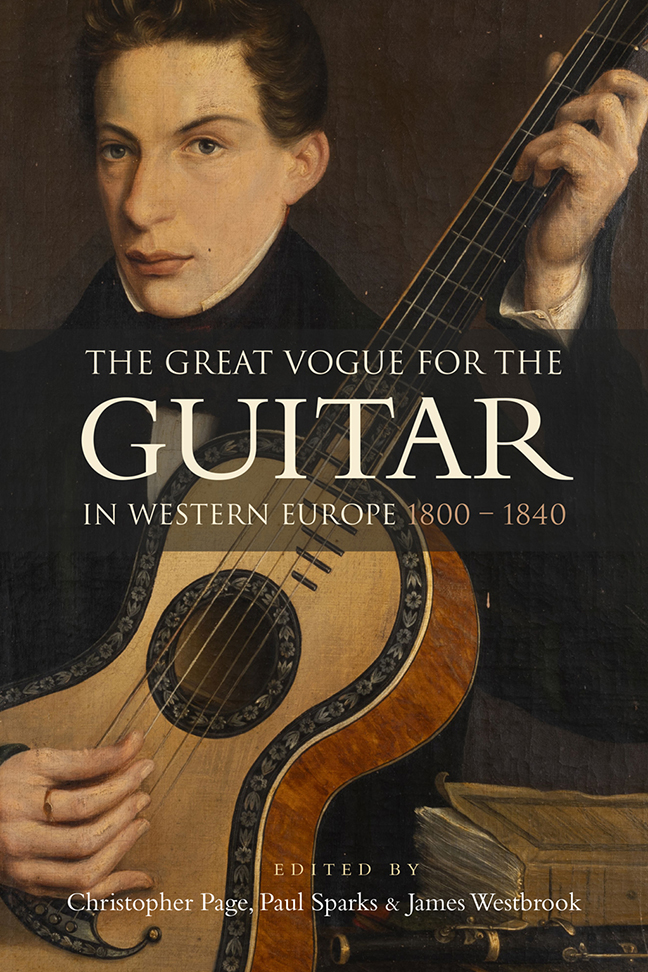Book contents
- Frontmatter
- Dedication
- Contents
- List of Illustrations
- Music examples
- The editors and the contributors
- Foreword
- Acknowledgements
- List of Abbreviations
- Introduction: The Great Vogue for the guitar
- I Contexts
- II The repertoire and its composers
- Appendix: A note on string-making
- Glossary of guitar terms
- Select Bibliography
- Index
10 - Chamber music for the guitar
Published online by Cambridge University Press: 10 January 2024
- Frontmatter
- Dedication
- Contents
- List of Illustrations
- Music examples
- The editors and the contributors
- Foreword
- Acknowledgements
- List of Abbreviations
- Introduction: The Great Vogue for the guitar
- I Contexts
- II The repertoire and its composers
- Appendix: A note on string-making
- Glossary of guitar terms
- Select Bibliography
- Index
Summary
A glance at the first edition of Carl Friederich Whistling's Handbuch der musikalischen Literatur (1817) is enough to show that the amount of chamber music, of all kinds, available in print was then plentiful. The string section alone takes up almost seventy pages, while chamber music involving a guitar occupies around a dozen. In the new edition that appeared eleven years later, however, the number of works involving the guitar has almost tripled. The enhanced capacity, volume and projection of the nineteenth-century instrument, relative to its Baroque forebears, certainly had a role to play in this expansion, but there were larger forces at work. The improved standard of living of the middle classes and the resulting changes to the social role of music were also important factors. In general, those of the middling sort viewed the arts as a way to express the values of individual freedom, achieved through personal effort and the blessings of education; taste for the arts also helped to define and reinforce social boundaries. Music, in particular, encouraged discipline and compliance in children; it was a family activity, and musical accomplishment could enhance a daughter's prospects in the marriage market. For these reasons, the pursuit of domestic music-making became a mark of status and an integral part of home life, with chamber repertoire chiming especially well with the bourgeois values of cooperation and civility. The favour especially enjoyed by music may be attributed to its combined emotional and rational nature; it required a mastery of rational elements – precise rhythms and correct notes, for instance – which imposed a discipline that constrained its turbulent and ‘effeminate’ side, for in the family it was usually the women who took charge of music-making. In addition to the piano, many had a guitar in hand, an instrument considered suitable for them. That being said, it was not deemed advisable to take music too seriously and, for the most part, aspirations to a professional level of performance were emphatically discouraged.
The concept and role of chamber music
Conceptions of ‘chamber music’ have varied greatly during the last five hundred years. Religious music in the family circle, promoted by Luther, the lute-based ensembles of the Renaissance and the trio sonatas of the Baroque are all part of its history.
- Type
- Chapter
- Information
- The Great Vogue for the Guitar in Western Europe1800-1840, pp. 157 - 172Publisher: Boydell & BrewerPrint publication year: 2023



